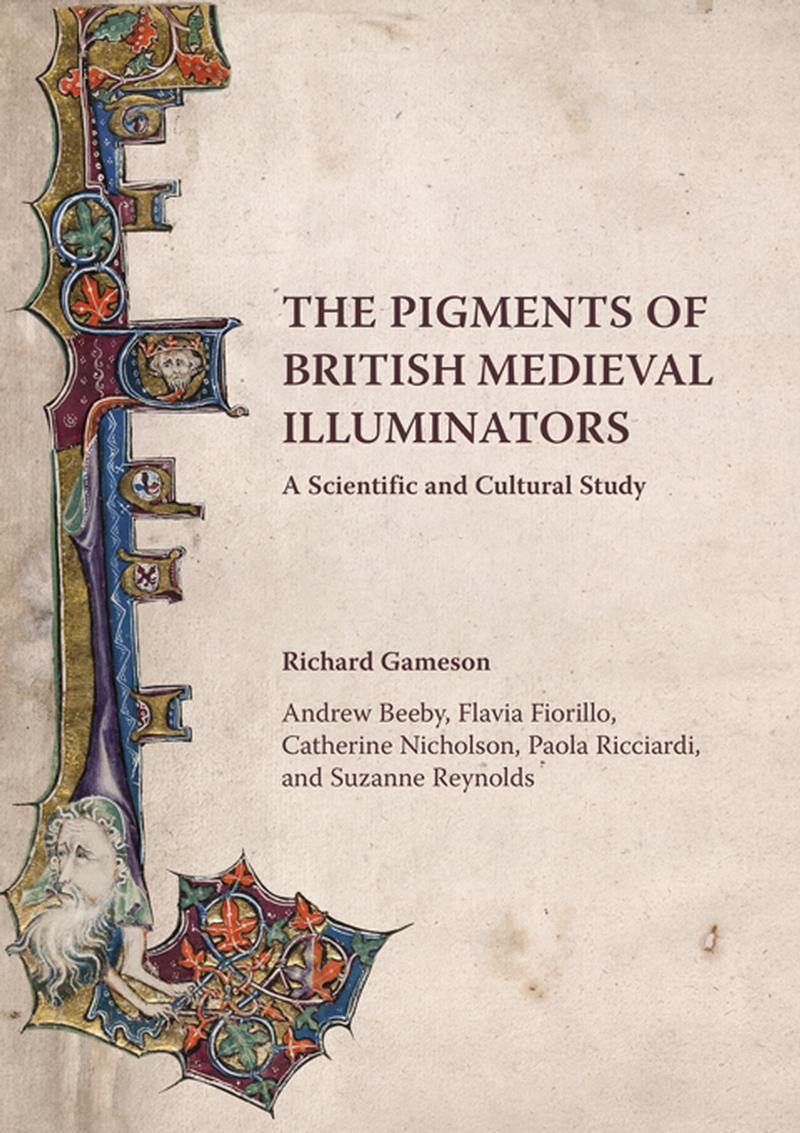Written by Richard Gameson, Andrew Beeby, Flavia Fiorillo, Catherine Nicholson, Paola Ricciardi and Suzanne Reynolds
With contributions from Mila Crippa, Anna Mazzinghi and Lucia Pereira-Pardo
This comprehensive and richly illustrated volume is the first-ever history of British medieval illuminators’ pigments. It rests on first-hand investigation, with optimal scientific techniques, of a wide selection of manuscripts, ranging in date from the seventh century to the fifteenth. It provides an authoritative, engaging and accessible guide to this understudied field, for historians, art historians, librarians, conservators, heritage scientists, and anyone interested in the art, culture and techniques of book illumination.
Have a look inside the book
Contributors
Preface and Acknowledgements
Illustration Credits
Abbreviations and Acronyms
Introduction
I The Pigments, Dyes and Inks, and How Best to Identify Them
The techniques in outline
Pigments, dyes and inks, and their identification
Notes
II Conversion and Colour, c.600–c.900
Historical introduction
Northumbria
Kent
Mercia
Southumbria in general
Wales and Scotland
Conclusion
Summary of pigment identifications
Notes
III Conquests and Chromophores, c.900–c.1066
Historical introduction
The era of Alfred, Edward the Elder and Athelstan.
The era of monastic reform
From the Danes to the Normans, c.1000–c.1066
Conclusion
Summary of pigment identifications
Notes
IV Normans, Angevins, Plantagenets and Pigments, c.1066–c.1250
Historical introduction
From the Norman Conquest to c.1100
The first half of the twelfth century
The giant bibles
The second half of the twelfth century
The first half of the thirteenth century
Conclusion
Summary of pigment identifications
Notes
V A Time of Expansion: Colour c.1250–c.1360
Historical introduction
1250–1307: to the death of Edward I
1250–1307: colour in context
1307–1360: from Edward II to the Black Death
Conclusion
Summary of pigment identifications
Notes
VI Colour after the Black Death, c.1360–c.1485
Historical introduction
From c.1360 to c.1400
The first half of the fifteenth century
The second half of the fifteenth century
Conclusion
Summary of pigment identifications
Notes
Conclusion: The Chronology of Colour
Appendix I: The Earliest Recipe Collections in British Books
Appendix II: Illuminators’ Materials in Royal Household Accounts, 1289–1290
Appendix III: Instrumentation
Bibliography
Index of Manuscripts
Index of People and Places
"... This unprecedented publication explores the richness of manuscripts and their pigments in medieval Britain and what they can tell us about the culture and historical context that produced them besides the type of text or commission, the available materials, the style of artwork, the preferences of the illuminators, and the scriptorium. (…) These insights are masterfully assembled into a publication that will have an impact on the way we assess and study our collections. Its abundance of considerations and findings will altogether inspire further research. Moreover, it will be an invaluable source for a broad spectrum of readers engaged in book history, heritage science and conservation, and will also guide students entering these fields."
Marinita Stiglitz in Journal of the Institute of Conservation, 47:2, p. 183-184
"Readers will be impressed by the number of manuscripts studied (p. 455 Index of Manuscripts), the extensive collection of images and data tables that support each chapter, and the thorough summaries of pigment-identification information (Chapter I) and details on analytical instruments (Chapter I and Appendix III), as well as the supplemental notes, references, and invaluable ‘meta’ resources such as historical recipes (Appendix I) and illuminators’ accounts (Appendix II). Additionally, the collaboration with numerous UK institutions and individuals, highlighted in the Preface and Acknowledgements, demonstrates the breadth of effort behind this publication. (...) In summary, this is a must-have reference for any professional working on the materiality of medieval manuscripts. It is also a scholarly achievement of the highest standard, truly illuminating the past for the present. But beyond that it is an engaging and captivating read bringing to life the production of illuminations throughout medieval Britain."
Mito Matsumaru in Newsletter of the Association for Manuscripts and Archives in Research Collections (AMARC) Issue 83 October 2024, p.31/32
You can find the full review here
"... Pour les deux derniers siècles du Moyen Âge, où lapalette s’élargit de manière conséquente, on relèveradeux évolutions notables qui livrent un éclairage surles pratiques artistiques : d’une part, les enlumineursjouent sur les propriétés sémantiques des substancesmatérielles dont ils font un élément signifiant desimages en différenciant, voire hiérarchisant au sein de celles-ci des pigments d’une même couleur ; d’autrepart, ils affirment leur individualité stylistique à traversla palette qu’ils utilisent, où la variété des pigments ledispute à la subtilité des mélanges. Cette personnalisationde plus en plus marquée de la palette rappelle, si besoinétait, tout l’apport des analyses physico-chimiques àla connaissance des oeuvres d’art et à l’identificationdes mains qui ont participé à leur élaboration. Cetteétude montre aussi tout le bénéfice des collaborationsinterdisciplinaires entre scientifiques du patrimoine,conservateurs et historiens, sans lesquellescet ouvragefondamental n’aurait pu voir le jour."
Charlotte Denoël in Art de l'enluminure, Mars 2024 p. 62/63
